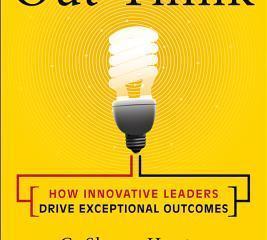

At age 18, Dallas Seavey was the youngest musher to finish what has been called the last great race on earth — the 1,049-mile Iditarod Trail Sled Dog Race.
Six years later, he became the youngest Iditarod champion, winning the 2012 race from Anchorage to Nome, Alaska, in 9 days, 4 hours, 29 minutes. Last year, he came from behind to claim his second title, in a time of 8 days, 13 hours, 4 minutes. And in the 2015 Iditarod, he grabbed title No. 3, crossing the finish line on March 18 in a time of 8 days, 18 hours, 13 minutes.
As a musher, Seavey regularly faces sub-zero temperatures and gale-force winds. He has experienced frostbite and conditions that have nearly taken his life. Though few people will ever face the extreme conditions for which Seavey and his dogs train, almost any workplace and any business manager can learn a thing or two from the way he leads his team.
Lesson 1: Know the team’s needs
Seavey’s training methods and race strategies hinge on an understanding of the requirements of his team. Aside from basic needs like food and rest, he notes that “dogs, like people, want to fit in.” As pack animals, they are extremely comfortable being part of a group. Accordingly, one of the scariest things for a pack animal is the idea of not being able to keep up with the team. For this reason, Seavey has to be careful to manage his team in a way that utilizes all of the dogs and allows them to keep up in the roles that they have been given.
Lesson 2: Provide leadership
As pack animals, dogs are most comfortable following one leader. Seavey notes that “the dogs don’t care who is in charge, as long as somebody is.” As long as he provides the leadership that the team needs, the dogs won’t look to dominate. In fact, he points out that the term “lead dog” may be a misnomer. Contrary to popular belief, lead dogs don’t have authority, nor do they want authority beyond what the musher gives them. Lead dogs are in the position they’re in precisely because they are willing to follow the commands given by the musher, even when faced with the resistance of the rest of the team.
Lesson 3: Inspire confidence, trust
Seavey acknowledges that his leadership must be absolute and that his dogs must be able to trust him 100 percent. In fact, successful training is based on creating trust between dogs and musher; that can only be gained through experience. Seavey indicates that after enough time seeing that they can trust him in any known situation, the dogs will begin to inherently believe that they also can fully trust him in unknown situations.
While fostering such trust can take years, it’s this kind of confidence in the leader that enables Seavey’s sled dog team to trek 10 to 12 hours at a time, and more than 100 miles per day, during a race.
The dogs not only trust that he won’t steer them astray, but that he knows their limits and won’t push them too far.
Problems with the team are relatively rare, but Seavey states that most issues hinge on trust. A dog that hesitates before following directions is usually exhibiting early signs of doubt, he says. This is most common in young dogs without the experience required to trust the musher implicitly.
Lesson 4: Team focus, team credit
When asked to summarize his history-making performances, Seavey refuses to credit himself or any of his hard work. Instead, he credits the team and its members. “I am totally amazed and impressed with these dogs. If you have a strong team, it’s amazing how much power you have to draw on.”
Though already an accomplished musher and leader at age 27, Seavey’s focus never wavers from the team mentality. With a solid understanding of the power of the pack, he appears poised to take on the next great challenge.
Apply these pack principles at work to create a winning team of your own.
Katie Loehrke is a human resources subject matter expert and editor with J. J. Keller &Associates, Inc., a nationally recognized compliance resource firm with more than 200 clients in the Las Vegas Vallety. She is the editor of J. J. Keller’s Employment Law Today newsletter and Employment Law Essentials manual. Reach her through the company website at www.jjkeller.com/hr.






